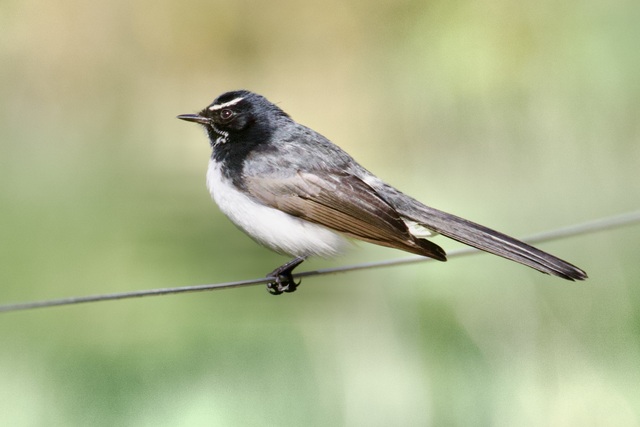I’ve had a few lovely walks at Ocean Grove Nature Reserve and the olive trees planted on the outside of the reserve around the north track have fruit on them.
The fruit attracts birds such as black-faced cuckoo-shrikes and silvereyes.
Another species that I spotted on the walk up the north track was several spiny-cheeked honeyeaters. These birds also feed on fruit as well as nectar. This species looks like a small wattlebird, as they have a grey crown, a grey-brown back, a white cheek with spiny bristles to below the ear, an orange-brown throat and chest, and pale underparts.
I was driving near Connewarre when I spotted a male and female Australian shelduck in a paddock. As I kept driving, I noticed two swamp harriers flying over the paddock, and then one of them swooped over the shelducks causing them both to fly away.
I doubt if the harrier would have killed the shelducks as they are birds of similar size, but the swamp harrier definitely looked hungry. I then saw a hare in the vicinity that fortunately saw the commotion caused by the harrier and duck encounter and managed to hop briskly out of danger.
This reminded me of a recent observation I made near Leopold where I saw two brown falcons perched on the ground, but they were being swooped by a very irate magpie, so much so that the falcons were forced to fly into a nearby tree.
When the falcons took off I saw a rabbit hop away from the area and it turns out that the falcons had been sitting on this live rabbit and the magpie had managed to chase them off and consequently save the life of the rabbit.
There are many people traveling at the moment both in Australia and around the world.
My friend Mandi has been driving to Cape York with her husband Mick and they saw a photo of one bird that is high on my list of desired sightings – a palm cockatoo.
Palm cockatoos are only found at the top of Cape York in Far North Queensland. This species is one of the few in the world that use implements to attract mates and to mark their territory, in that they use wood and seed pods to make drumming sounds.
Another friend, Jenny, has been visiting some islands off the coast of Scotland and she saw many Atlantic puffins, another bird high on my wish list.
Closer to home, another friend Sally saw an endangered Mallee fowl by the side of the road when driving from Pinnaroo to Loxton.
I hope that this bird managed to stay off the road and avoid the cars.
I received an email from Ocean Grove local Lyn, who is also in far North Queensland at 1770. She saw two brush turkeys preparing a nest near the beach. Brush turkeys build nests called mounds, similar to other birds such as the Mallee fowl. The eggs are laid within the mound and the parent birds do not sit on the eggs to incubate them; instead, they spend their time working the soil in the nest in a bid to maintain a constant temperature for the eggs within the mound. When the young hatch they can feed themselves and do not rely on the parent birds to look after them.
Lyn also saw a bush-stone curlew sitting on a nest, which is a scrape made on the ground, at the caravan park at 1770. I read that these birds have been reintroduced to Phillip Island as foxes have been eliminated from the island.
I received an email from Kevin and Anne Maree, who drove to Winchelsea one day. They reported that the weather was fine and the small birds could be heard clearly as they didn’t have to compete with the little corellas, which were, once again, strangely absent.
Kevin managed to get a few photos of New Holland honeyeaters, a willie wagtail, red wattlebird, white-plumed honeyeaters and rainbow lorikeets, but he missed out on seeing the golden whistlers that were vocalising loudly from high in the tree canopy.










